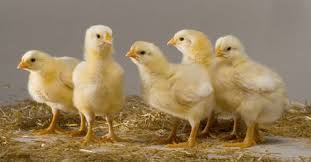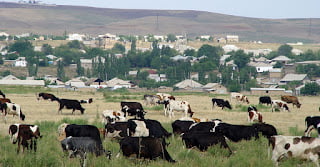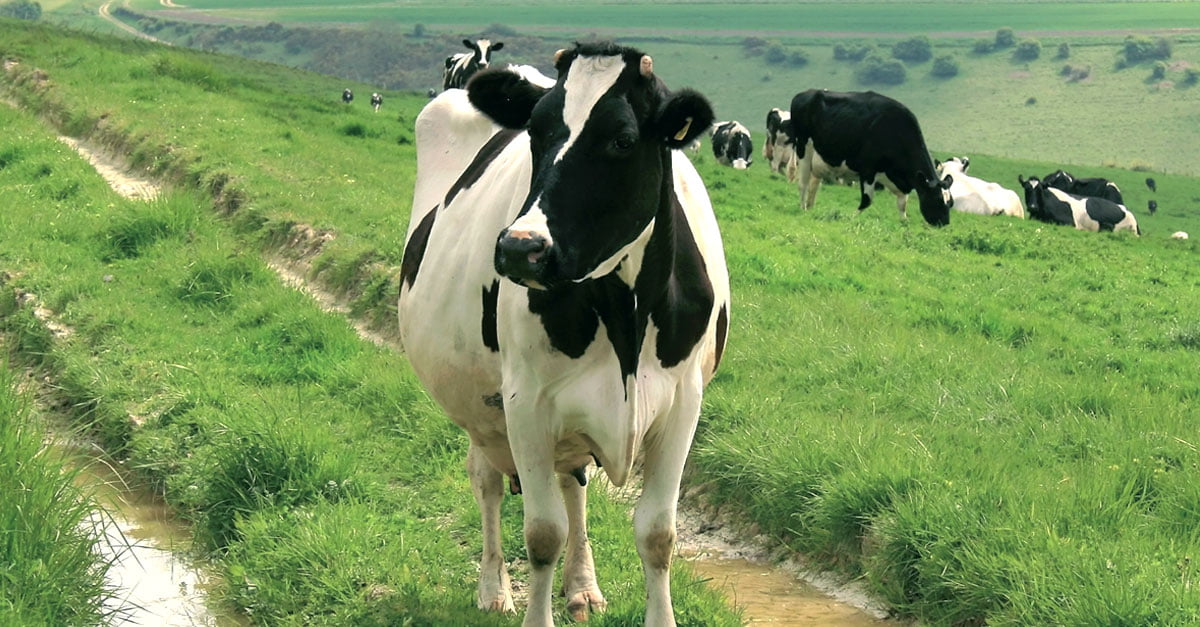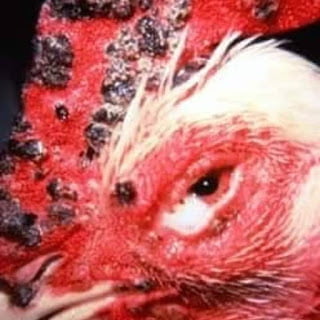By definition Mortality or death rate is the proportion of a population who die of a defined cause Causes early chick mortality? There are myriads of causes of early chick mortality. However, the most common factors are: Let’s discuss all four mortality causes gradually. Genetic Causes There are around 21 lethal gene mutations in birds. Most of these lethal genes lead to chicks’ death during the incubation period. However, congenital tremors and congenital loco cause the death of chicks within a week of hatching. Management Causes Another most important cause of…
Category: Diseases
Animal Disease Economic,Politica and Social Impacts:Damages for Animals
INTRODUCTION DIESEASE The term diseasebroadly refers to any condition that impairs normal function, and is always associated with dysfunction of normal homeostasis. Commonly, term disease is used to refer specifically to infectious diseases, which are clinically evident diseases that result from the presence of pathogenic microbial agents, including viruses, bacteria, fungi, protozoa, multicellular organisms, and aberrant proteins known as prions. An infection that does not and will not produce clinically evident impairment of normal functioning, such as the presence of the normal bacteria and yeasts in the gut, is not…
Animal disease | Definition, Types, Diagnosis, & Facts (new)
Animal disease, an impairment of the normal state of an animal that interrupts or modifies its vital functions. The breeder must pay attention to the health of the animal so that the output can be satisfactory. Here in Tanzania, there are not many diseases affecting pigs, but they occur regularly depending on the age, environment and health of the animal.Diseases bring losses to the breeder as they can cause death, weight loss, lack of blood especially in children and stunting of pigs. Therefore, it is good to prevent them and give information to a veterinary expert…
Infectious bronchitis (new)
Infectious bronchitis Is a highly contagious viral respiratory infection of chickens, however the virus will also infect the urogenital and gastrointestinal tracts. The clinical signs of infectious bronchitis are non-specific and so laboratory tests are required to confirm diagnosis. Clinical signs are strongly dependent on the tropism (preferred tissue to infect) of the strain, but commonly include include coughing, sneezing and gasping in young birds, loss of appetite and wet litter. Infectious bronchitis (IB) is an acute, highly contagious, viral respiratory disease of chickens, characterized by tracheal rales, coughing, and sneezing. In addition,…
Infectious Coryza (new)
Infectious coryza is a serious bacterial disease of chickens which affects respiratory system and it is manifested by inflammation of the area below the eye, nasal discharge and sneezing. The disease is found all over the world causing high economic losses. Take note: Infections Coryza is usually acute and sometimes chronic, highly infectious disease of chickens, occasionally pheasants and guinea-fowl. Infectious Coryza is characterised by catarrhal inflammation of the upper respiratory tract, especially nasal and sinus mucosae. Infectious Coryza is caused by the bacterium Haemophilus paragallinarum and is seen in many countries…
RAISING A DISEASE-FREE POULTRY FARM (new) I Mshindo Media
The cheapest and most-effective method of disease control is through implementing *biosecurity*. *Bio security* ensures that the health and well being of your birds are protected hence improving the immunity and performance of your flock. *Bio security* is a management practice designed to prevent entry of diseases into a farm, and limit spread. It is an essential element to a good animal husbandry process. It is important that every poultry farmer checks if their bio security plans are strong enough to keep out diseases. Infectious diseases are introduced on farms through:…
Antibiotics for Treatment of Clinical Mastitis I Mshindo Media
The Use of Antibiotics for Treatment of Clinical Mastitis Introduction Mastitis is the most common disease of dairy cows and the most common reason that cows are treated with antibiotics . Mastitis is a bacterial infection of the udder which causes inflammation (host defenses responding to the infection). What Types of Bacteria Cause Clinical Mastitis? What Should We Consider before Treating Mastitis? Dairy farmers should work closely with their herd veterinarian to help develop treatment protocols, provide oversight for appropriate drug use, and monitor the success of treatment.Intramammary antibiotic tubes…
Viral Infections/Gumboro (Infectious Bursar Disease) I Mshindo Media.
(Infectious Bursar Disease) Ni ugonjwa unaosababishwa na virusi ambao hushambulia zaidi kuku, bata maji na bata mzinga. Kuku na batawadogo hadi wiki 12 ndio wanaoathirika zaidi. Jinsi Ugonjwa Unavyoenea.•Chanzo cha maambukizi ni maji, chakula na vifaa/vyombo vya shambani vilivyochafuliwa na kinyesi chakuku wagonjwa na wenye vimelea.•Maambukizi pia huenea kupitia mfumo wa hewa, kwa vumbi lenye vimelea katika mabanda. Chukua Tahadhari.Wageni, wafanyakazi na magari yanaweza kusambaza ugonjwa kutoka shambahadi shamba au banda hadi banda. Hii ni pamoja na kuku hai, vifaa/vyombo vya shambani na bidhaazitokanazo na kuku (mayai, nyama, manyoya na…
Disease Prevention- Definition & Control (Ticks, Wounds, Vaccination)
Disease prevention is a procedure through which individuals, particularly those with risk factors for a disease, are treated in order to prevent a disease from occurring. Prevention of diseases is always both better and cheaper than treatment. Treatment normally begins either before signs and symptoms of the disease occur, or shortly thereafter. Even if vaccines and other preventive measures may seem expensive, they are in the long run much cheaper than loosing animals or letting animals suffer and loose condition and buying expensive drugs – not to mention the fees of the vets.…
Epivag I Meaning,Signs &Treatment (new)
Epivag Common Names: Infectious epididymitis, Cervici-vaginitis A disease characterized by vaginitis in cows and epididymitis in bulls occurs sporadically in eastern and southern Africa, where it is referred to as epivag Epivag is a rare chronic venereal infection of cattle probably caused by a virus. It occurs in East and Southern Africa. In the 1930s the disease was rampant in Eastern and Southern Africa, prompting the creation of the world’s first national AI service to control it in Kenya. It has now become sporadic and reports are unusual. The infection…
Retained Placenta: Signs, Cause, Symptoms& Treatment (new)
After giving birth cows sometimes do not drop the afterbirth (placenta) immediately. This can cause problems as decaying placenta tissue can cause a serious bacterial infection of the cow and if untreated the cow can even die. Normally expulsion takes place within 3-8 hours after delivery of the calf. Retained placenta is a common complication after calving; if the cow doesn’t shed those membranes within about 12 -24 hours, it’s considered to be “retained.” Call a veterinarian after 12 hours to judge the situation and watch your cow closely. dont remove…
Animal Diseases Diagnosis I Mshindo Media (new)
Introduction – signs of disease Animal disease, an impairment of the normal state of an animal that interrupts or modifies its vital functions. Farmers and pastoralists know that animals are sick when they notice changes in behavior such as refusal to eat, keeping to shady areas, or physical signs such as different breathing, coughing, body swellings and weakness etc. Serious livestock farmers will keep observing their animals on daily basis to make sure no such signs miss their attention. It is important to catch such symptoms at an early stage in order to treat before…
Mange in Dogs,Meaning, Treatment and Prevention
Mange is a skin disease that affects mammals caused by microscopic mites that burrow into skin Mange, skin disease of animals caused by mite infestations, characterized by inflammation, itching, thickening of the skin, and hair loss. The most severe form of mange is caused by varieties of the mite Sarcoptes scabiei, which also causes human scabies. Some form of mange is known in all domestic animals, although many varieties of mange mites infest only one species. They are transmitted between animals by direct contact and by objects that have been in contact with infested animals. Most forms of mange are treatable…
Milk fever in dairy cows:Strategies for preventing& It’s Measures
Milk fever Milk fever arises when cows are unable to mobilise sufficient calcium at calving. This website is intended to provide a better understanding of the challenge of controlling (sub)clinical milk fever for dairy farmers. What is milk fever? Milk fever, or hypocalcemia, is a calcium deficiency. The disease has a clinical and a subclinical form and affects when cows they are at their most vulnerable – during the transition period. Cows need a large amount of calcium immediately after calving: initially they take the calcium from their blood and…
Common Cattle diseases I Signs,Prevention and their management
COMMON CATTLE DISEASES Cattle suffer from a variety of diseases. Diseases are more common among herds kept in tight quarters, such as on feedlots, or large herds kept on too few acres. Diseases are also more common among stressed animals, such as calves weaned and shipped immediately to new locations. Keeping new animals quarantined until you’re sure they aren’t suffering from disease is a simple herd management practice that can keep the majority of your livestock healthy by reducing the number of potentially transmitted diseases. Beef cattle diseases fall into…
Mastitis prevention control and Treatment
What is mastitis in cattle? Mastitis is an inflammation of the mammary gland or udder. Mastitis in dairy cows is caused by udder infections, usually resulting from bacteria introduced either during the milking process or from environmental contact. What antibiotics are used to treat mastitis in cows? The drugs considered include the more common penicillins, aminoglycosides and macrolides; oxytetracyline, chloramphenicol, trimethoprim, and several sulphonamides. The success of systemic therapy against mastitis depends to a large extent on the concentration of antibacterial drug achieved at foci of infection. What is the best treatment for mastitis in cows?Treatment approachStripping (hand milking) out the infected milk…
Cattle diseases I Mshindo Media
Dear farmer and breeder, today I would like to inform and remind each other about some cattle diseases. Today we will look at and discuss one of the two diseases CATTLE WORMS. Worm disease causes losses to cattle breeders. Research shows that many cattle are affected by the worms and reduce production. In addition, research shows that the problem of worms in cattle is widespread . (i) SPECIES OF WORMS. Worms that affect cattle are divided into different groups as follows; Liver flukes. Worms that end up in the lungs…
FOWL POX DISEASE/POX
This is one of the viral diseases that have been attacking chickens to a large extent. Source 👉This disease is caused by a virus, Fowl Pox Virus This virus affects chickens of all ages, large and small Spreading 👉This disease spreads very quickly in the environment or shed immediately after entering 👉For other areas, with many mosquitoes, it is said that piaa is spread by mosquitoes. 👆 This disease is also hidden or carried by other birds, especially ducks and sent to chickens. Treatment 👉 There is no cure for…



















